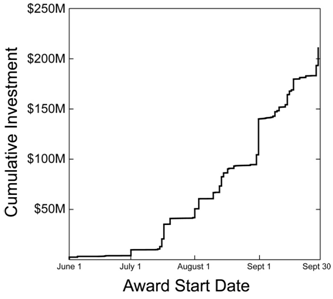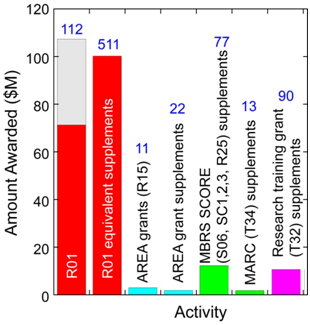Fiscal Year 2009, which ended on September 30, was a time of unprecedented opportunities for NIH due to the American Recovery and Reinvestment Act. As I noted previously, NIGMS used Recovery Act resources to support a variety of funding mechanisms.We have now analyzed the overall results for R01 grants using both our regular appropriation and Recovery Act funds. These results are shown in Figures 1-3.
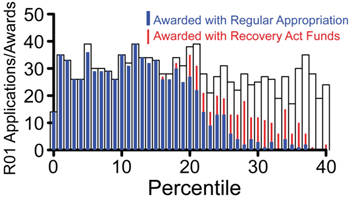
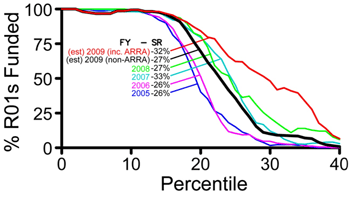
The total NIGMS expenditures (including both direct and indirect costs) for R01 grants are shown in Figure 3 for Fiscal Year 1995 through Fiscal Year 2009.
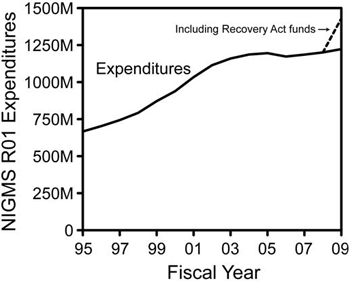
We are analyzing additional data on NIGMS funding trends and will be posting these results on the NIGMS Funding Trends Web site.


